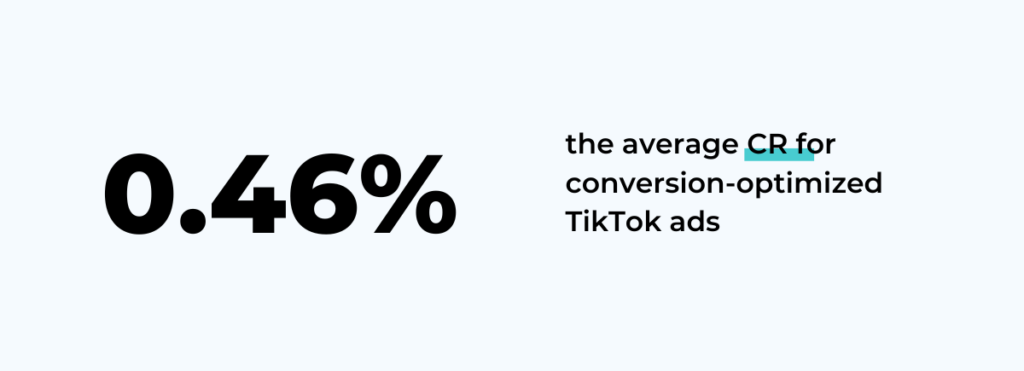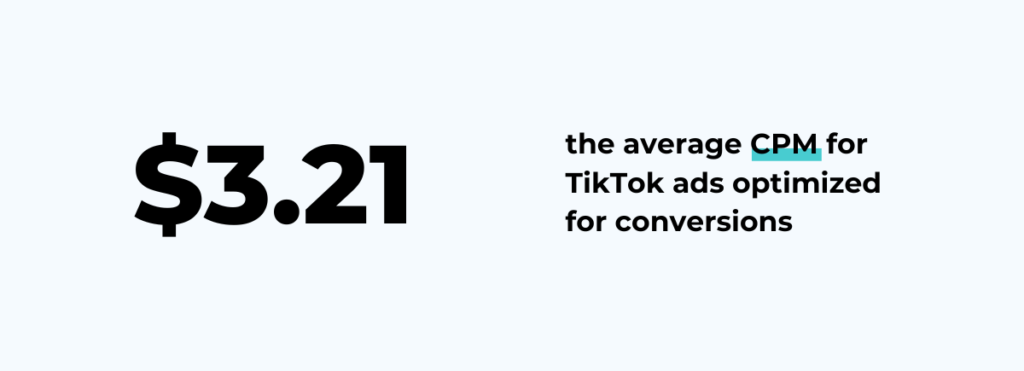TikTok has exploded in popularity over the past few years, with millions of users creating and sharing short-form videos on the platform. As a result, TikTok has become an attractive platform for businesses looking to advertise to this younger, highly engaged audience. TikTok benchmarks, like in other advertising platforms depend on competition and the number of advertisers.
- the current state of TikTok advertising, including ad formats, targeting options, and any new ad features.
- TikTok benchmarks and best practices for TikTok advertising, including average click-through rates (CTRs), cost-per-click (CPC) or cost-per-impression (CPM) for different ad formats and industries
- tips for creating effective TikTok ads.
- future developments or trends that we expect to see in TikTok advertising.
The current state of TikTok advertising
The current state of TikTok advertising is constantly evolving as the platform continues to grow and introduce new features.
In recent months, TikTok has become an increasingly attractive option for advertisers, particularly in light of the challenges that Facebook has faced with its ad performance following the iOS 14 update.
As a result, more and more businesses are testing out TikTok as a way to reach their target audience.
One key advantage of TikTok advertising is the low CPMs that many businesses have experienced compared to other platforms like Facebook and Google. However, as more and more advertisers flock to the platform, we expect to see CPMs begin to rise.
TikTok ads CTR benchmarks
First, let’s start with CTR.
So, the Click-through rate (CTR) is an important measure to see how well an ad campaign is doing. To find CTR, you divide the number of times people click on an ad by how many times it’s seen, and then you turn it into a percentage.
Now, we’re going to check out the usual CTR for TikTok ads designed to make more sales. The campaigns are optimized for conversions and targeted at e-commerce customers, with the event being a “Complete payment.
Based on our data, the typical CTR for these particular TikTok ads is 0.84%, which is the industry average. This data is updated in real-time, so the latest CTR benchmarks can always be found within the Lebesgue: AI CMO.

It’s worth noting that this CTR is comparable to underperforming Facebook ads CTR. While it’s true that CPMs on TikTok are generally lower than on Facebook, the CTRs on TikTok may also be slightly lower.
See more on how to increase TikTok CTR.
TikTok ads CR benchmarks
According to our data, the average CR for conversion-optimized TikTok ads is around 0.46%. However, it’s important to note that averages can be significantly different depending on various factors such as targeting, ad budget, and landing page experience.
With the right combination of these factors, businesses have the potential to achieve CRs that are significantly higher than the average!

To make your TikTok ads work better and follow best practices, think about using Lebesgue: AI CMO. It analyses a big set of data to help businesses find out what works best in marketing and make decisions based on data. No need to spend lots of time reading blogs and figuring out trends.
Alternatively, check our blog post on how to optimize your landing page experience for TikTok ads.
Average TikTok ads CPM
The last metric is CPM, which stands for Cost-Per-Thousand Impressions.
CPM helps us see how cost-effective an ad campaign is. To find CPM, you divide the cost of the campaign by the number of times the ad is seen, and it’s measured as cost per thousand impressions.

It’s worth noting that this CPM is approximately 30% lower than similar ad types and targeting on Facebook ads.
While this lower CPM can be attractive for businesses looking to stretch their ad budget, it’s important to keep in mind that lower CPMs may also be accompanied by lower CTRs and CRs.
How to benefit from low TikTok ads CPM
Having a low CPM on TikTok is a big plus for businesses. It means they can boost brand awareness and get better value from their ad budget. When CPM is low, businesses get more views for their budget, especially compared to platforms like Facebook.
This is especially handy for those aiming to stand out on TikTok. It’s a great strategy, especially for businesses in competitive industries, where ads can be expensive. It helps them get more brand visibility without spending too much.
Additionally, if a business is able to create high-quality content and achieve a high CTR on TikTok, they may be able to get even more clicks for the same ad budget compared to other platforms. This is a great way to drive traffic to a business’s website or online store and potentially lead to more conversions.
When to start testing TikTok ads
As with any ad platform, there are certain circumstances in which TikTok ads may be particularly useful for businesses. Here are a few scenarios where starting a TikTok ad campaign may be a good idea:
- If your target audience is under 40 years old: TikTok is a platform that is particularly popular with younger users, so if your target audience falls within this age range, it may be a good fit for your business.
- If you’re having trouble getting low CPMs on other platforms, TikTok may be worth considering.
- If you’re able to achieve higher than average CR and CTR on other platforms, and you know how to impact those metrics through your ad strategy and targeting, TikTok may be a good fit for your business.
- If you’re looking to increase brand awareness: With its large and growing user base, TikTok can be a powerful tool for increasing brand awareness. If this is a major goal for your business, TikTok advertising may be worth considering.
Summing Up
In summary, TikTok is a popular social media platform that has seen an increase in ad spend from businesses in recent years.
The average CPM for TikTok ads is around $3.21. The average CTR is 0.84% and the average CR is 0.46%.
There are several situations in which TikTok advertising may be particularly useful for businesses, including if the target audience is under 40 years old, if you’re looking to lower CPM, or increasing brand awareness.
Frequently Asked Questions about TikTok Ads Benchmarks
A good CPM (cost per 1,000 impressions) for TikTok ads typically falls between $3 and $15, depending on your target audience and industry. This range reflects TikTok’s competitive pricing compared to other platforms, making it an attractive option for brand awareness campaigns.
Typical conversion rates for TikTok ads range from 0.5% to 5%, with higher rates achievable in industries like e-commerce or fashion, especially when paired with well-optimized campaigns and compelling offers.
The average cost-per-click (CPC) on TikTok ranges from $0.20 to $2.00, depending on factors like your bidding strategy, ad quality, and target audience. Industries with high competition may see higher CPCs, while niche markets may experience lower costs.
A good click-through rate (CTR) on TikTok ads typically ranges between 0.5% and 1.5%, depending on your creative quality and audience fit. For highly engaging ads tailored to TikTok’s style, CTRs above 2% are achievable and considered excellent.
To avoid ad fatigue, aim for an ad frequency of around 5-7 views per user. Going beyond this range can lead to reduced engagement and increased costs, as audiences may become desensitized to your ads.
Optimizing campaigns for TikTok involves setting clear objectives (like conversions), ensuring accurate conversion tracking, and leveraging automatic placements. Regular audits, such as those offered by Lebesgue, can help identify inefficiencies and provide actionable recommendations.



